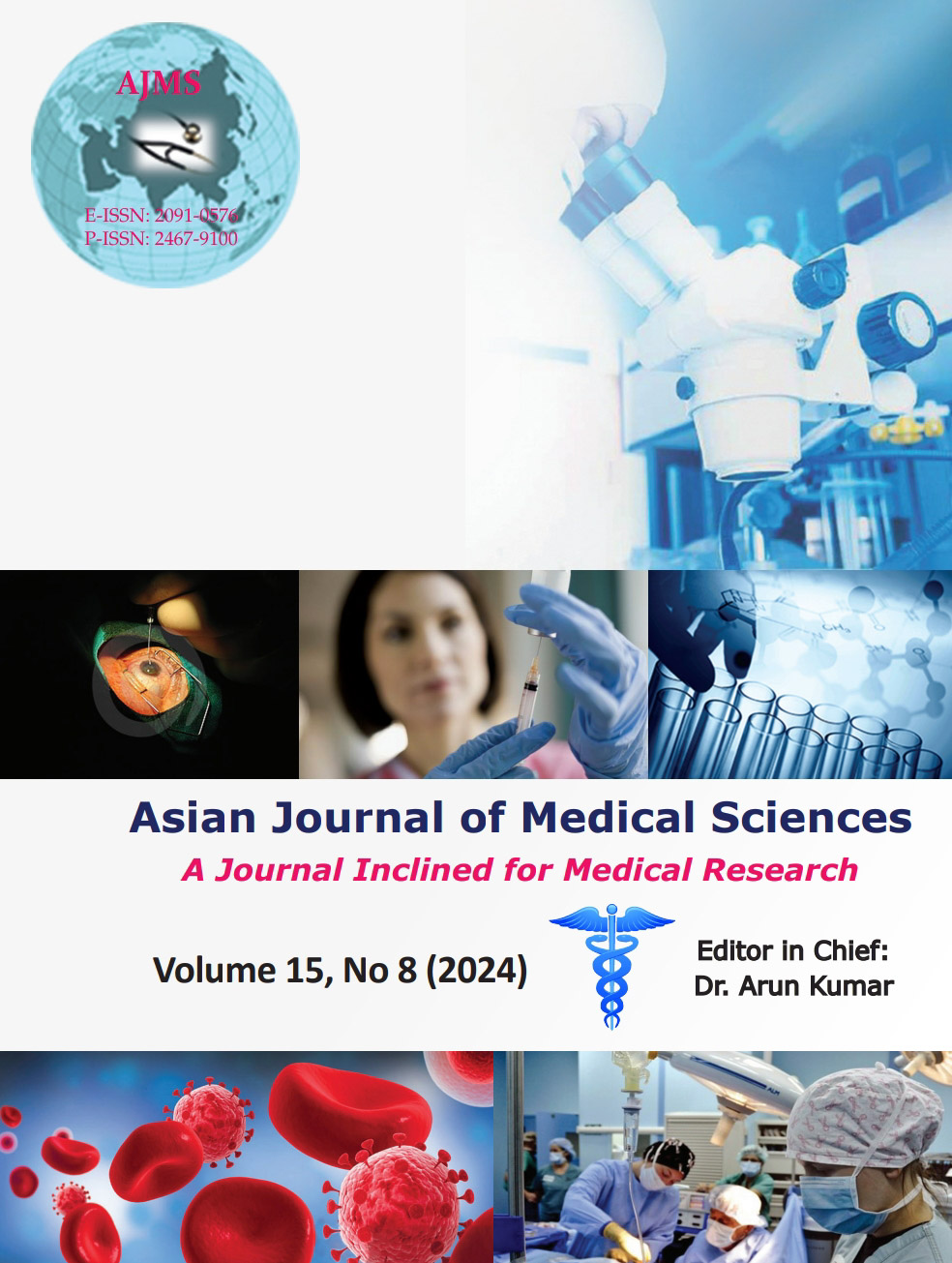Graham’s patch omentopexy versus modified Graham’s patch omentopexy in duodenal perforation – A comparative study
Keywords:
Perforation peritonitis; Exploratory laparotomy; Wound dehiscenceAbstract
Background: Peptic ulcer perforation is a serious complication which affects 2–10% of peptic ulcer patients. Peptic ulcer perforation presents with an overall mortality of 10% although various authors had reported incidence between 1.3% and 20%. Being a life-threatening complication of peptic ulcer disease, it needs special attention with prompt resuscitation and appropriate surgical management if morbidity and mortality are to be contained.
Aims and Objectives: The aim of the study was to the comparative study of Graham’s omentopexy versus modified Graham’s omentopexy in duodenal perforation.
Materials and Methods: This prospective and single-center study was done in Birsa Munda, GMC Shahdol Madhya Pradesh from 2021 to 2023 for 2 years of periods. A total of 160 patients divided into two groups-Graham’s omentopexy 80 cases group “A” and modified Graham’s omentopexy 80 cases group “B.”
Results: One hundred and forty-six (91%) were male and 14 (9%) were female with M:F Ratio 10:1. Most of the patients were 20–78 years of age in both groups. Post-operative leakage was 7.5% and 1.25%, respectively. Mortality rate in Group A (3.75%) and in Group B (1.25%). The overall mortality rate was 7.14%. In this study, average hospital stay was 12.4 days in Group A and 9.0 days in Group B.
Conclusion: This study showed that modified Graham’s patch repair is as effective as Graham’s patch repair in terms of the mean operative time period, the timing of oral feed allow, and mean hospital stay timing.
Downloads
Downloads
Published
How to Cite
Issue
Section
License
Copyright (c) 2024 Asian Journal of Medical Sciences

This work is licensed under a Creative Commons Attribution-NonCommercial 4.0 International License.
Authors who publish with this journal agree to the following terms:
- The journal holds copyright and publishes the work under a Creative Commons CC-BY-NC license that permits use, distribution and reprduction in any medium, provided the original work is properly cited and is not used for commercial purposes. The journal should be recognised as the original publisher of this work.
- Authors are able to enter into separate, additional contractual arrangements for the non-exclusive distribution of the journal's published version of the work (e.g., post it to an institutional repository or publish it in a book), with an acknowledgement of its initial publication in this journal.
- Authors are permitted and encouraged to post their work online (e.g., in institutional repositories or on their website) prior to and during the submission process, as it can lead to productive exchanges, as well as earlier and greater citation of published work (See The Effect of Open Access).




